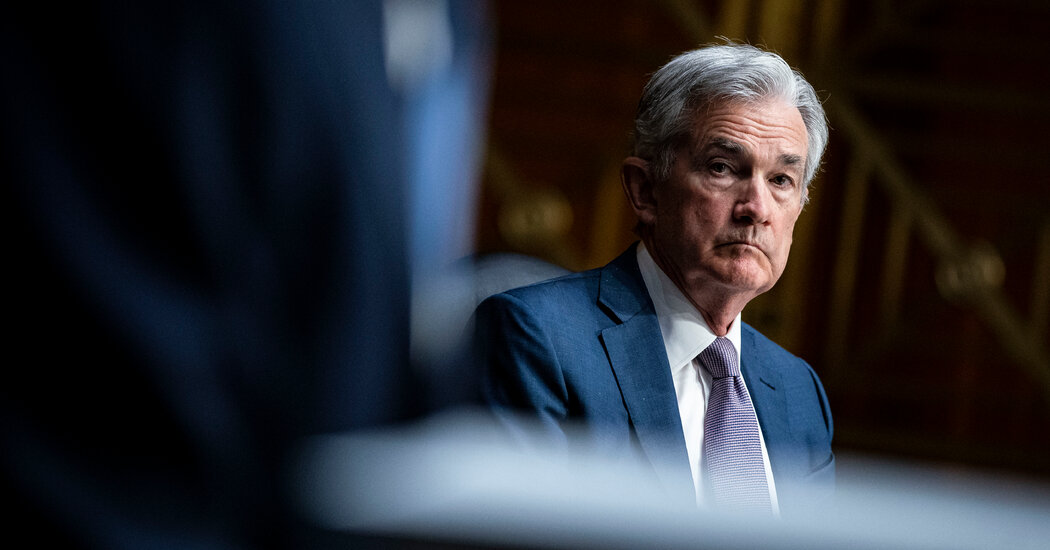MARKETING NEWS
Fed Leaves Rates Unchanged and Commits to Ongoing Bond Purchases
WASHINGTON — Federal Reserve officials pledged to help the economy through the painful pandemic era, making clear at their final meeting of the year that the central bank would continue cushioning businesses and households by keeping interest rates at rock bottom and buying government-backed debt for the foreseeable future.The Fed’s chair, Jerome H. Powell, said at a news conference after the meeting that the central bank would keep its effort to bolster demand going “for some time,” adding that the “the next few months are likely to be very challenging.”The Fed cut interest rates to near-zero in March and has been buying about $120 billion in government-backed debt each month to soothe markets and help shore up growth. The central bank explicitly tied its bond-buying program to its goals of full employment and stable inflation in its December policy statement. The move suggested that the Fed expected to continue its purchases for some time, given how far the economy is from meeting those goals.The committee said the Fed would continue to increase its holdings of Treasury securities at the current pace “until substantial further progress has been made toward the committee’s maximum employment and price stability goals.”Mr. Powell said the policy decisions were intended to show that the Fed would “deliver powerful support to the economy until the recovery is complete.”He used his post-meeting remarks to paint a picture of a bifurcated economy, one in which many businesses and households face acute economic pain in the near-term, coupled with the expectation that the economy would snap back once vaccines were widely available — a development that he guessed could come about as soon as midyear.The United States could then see a long period of unbroken growth, Mr. Powell predicted, signaling that he and his colleagues were prepared to leave rates low for years on end as they try to return the labor market and broader economy to full strength.Government policies are “trying to work together to try to create a bridge across this economic chasm that was created by the pandemic, and for many Americans, that bridge is there, and they’re across it,” he said.“But there’s a group for which they don’t have a bridge yet,” Mr. Powell added, suggesting later that more help from Congress is needed to help fill the gap. “It’s the 10 million people who lost their jobs, it’s the people who may lose their homes. You see the many, many millions of Americans who are waiting in food lines in their cars these days.”He said the economy would need the Fed’s support for some time because while officials expect it to grow at a healthy clip starting in the middle of next year, “it is going to be a while before we really are back to the levels of labor market conditions that we had early this year.”The central bank’s summary of economic projections, released Wednesday, underlined Mr. Powell’s patient point. They showed that Fed officials had a slightly more optimistic outlook for growth and unemployment at the end of 2020 and in coming years than they had been in September. The central official now sees unemployment declining to 5 percent in 2021, versus a previous prediction of 5.5 percent, and sees gross domestic product coming in at 4.2 percent versus 4 percent.Despite that upgrade, the median Fed official continued to project interest rates near-zero through the end of 2023, demonstrating the central bank’s plan to move glacially coming out of the crisis.While the Fed promised to do what it could to help the economy, Mr. Powell also stressed its limitations. He repeated his call for more fiscal stimulus, saying that the continuing rise in virus cases and the lapse in funding for several programs that were helping households and businesses stay afloat posed challenges.Updated Dec. 16, 2020, 7:32 p.m. ET“The case for fiscal policy right now is very, very strong, and I think that’s widely understood,” he said. “Now that we can kind of see the light at the end of the tunnel, it would be bad to see people losing their business, their life’s work, even generations’ worth of work” because they could not hold on for a few more months.Lawmakers have continued to haggle over another stimulus package as millions remain out of work and the financial cushions that Congress approved in March are running dry. Negotiators appeared to be moving toward agreement on a $900 billion package on Wednesday, though a deal is still not guaranteed.Uncertainty over relief comes at a time when the outlook is looking up — cheered by the vaccine — but substantial risks remain. Mr. Powell warned that challenges remained in terms of vaccine rollout and said it was “difficult to assess” when economic activity would return to normal.“A full economic recovery is unlikely until people are confident that it is safe to re-engage in a broad range of activities,” he said.For now, several data points — including retail sales and jobless claims — have taken a turn for the worse as coronavirus cases rise and state and local governments reintroduce lockdown measures to try to slow the spread of the virus and prevent hospital overcrowding.The labor market fallout remains painful and remarkable. The United States had nearly 10 million fewer jobs in November than in February. New unemployment claims are ticking back up after moderating, Labor Department data showed last week, and remain sharply elevated from earlier in the year.The hit has been especially intense for women, those with lower education levels, and people of color. The unemployment rate for Black adults stood at 10.3 percent in November, nearly double pre-pandemic levels, as did unemployment for Hispanic workers, who had a jobless rate of 8.4 percent.That matters to the Fed because Congress has charged it with two jobs: It is supposed to foster maximum employment and low and stable prices. Returning a flailing economy to those conditions quickly could prove to be a major task.The central bank’s policies mainly work by making credit cheaper so that households and businesses will have an incentive to borrow and spend, pumping up demand in the economy. Faced with more demand, the logic goes, employers will hire and will have the wherewithal to lift wages and prices.The Fed had traditionally used its policy interest rate — the federal funds rate — as its primary policy tool, but it has cut that rate to rock bottom in the past two crises. Both in the 2007-2009 recession and now, the central bank has turned to large-scale bond purchases as a supplementary policy lever.Bond buying works both to calm markets by creating a constant source of demand for government-backed securities, and by bolstering the economy both by lowering longer-term interest rates and by nudging private sector money into slightly riskier investments, like stocks.The central bank has also put in place an array of emergency lending programs during the pandemic recession, commonly called “13-3 programs” for the section of the statute that enables them. Its efforts have bought corporate bonds, lent to small and midsize businesses, and helped to keep credit flowing to state and local governments.While those programs have been the subject of criticism at times for their stringent terms, or for propping up big corporations more effectively than small ones, they have also provided a key backstop for financial markets during a tense period.Steven Mnuchin, the Treasury secretary, has to sign off on such efforts. He said last month that he would be shutting down five of the loan programs, all of which were backed by a congressional appropriation that Mr. Mnuchin said was meant to sunset at the end of the year. The Fed deferred to his reading of the law, but expressed dissatisfaction with his choice.Mr. Powell noted that the Treasury Department “could” still authorize funds to support the programs using an existing pot of money. But he demurred when asked whether he would accept a new legal interpretation around the appropriation — most likely alluding to the possibility that a new Treasury secretary could try to restart the programs using the congressional funding, something Democrats have advocated.“We’re very focused on — we have a lot to do now,” Mr. Powell said.
Source link













